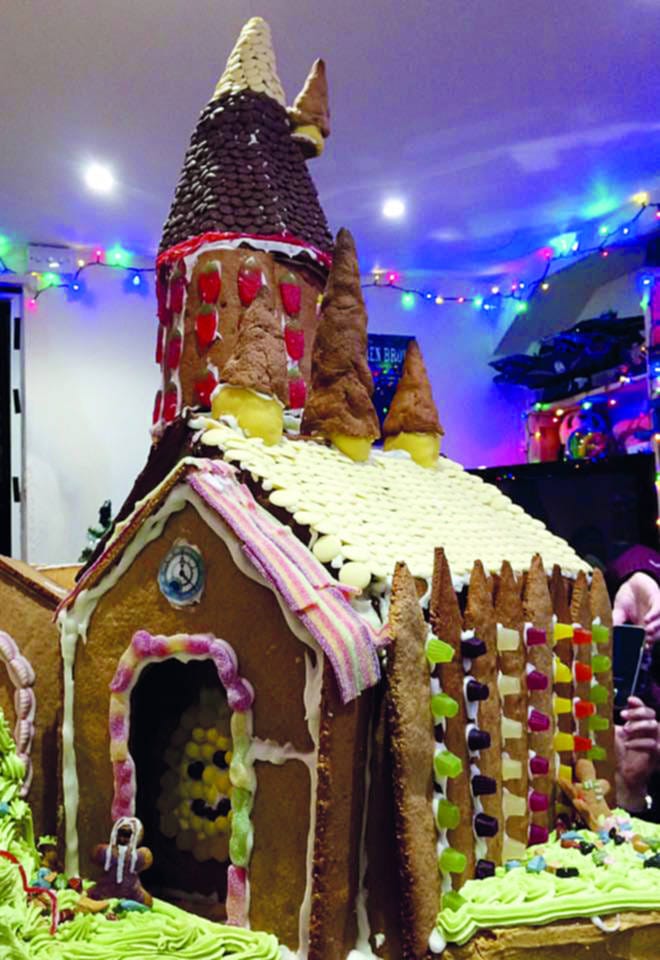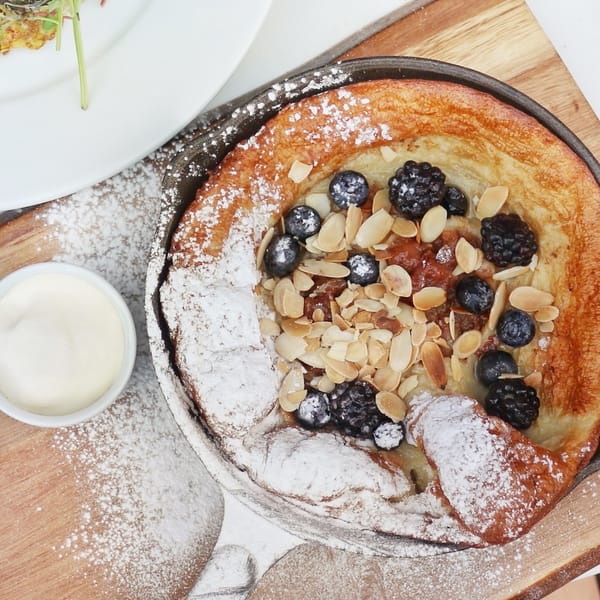How to build Hogwarts
It all started as friends in halls. The Christmas tradition started in 2008, and by 2009 we’d first discovered gingerbread together. Since then, it’s escalated, trying to be bigger and better each year. In a true Imperial spirit, we’ve taken a scientific, competitive approach.
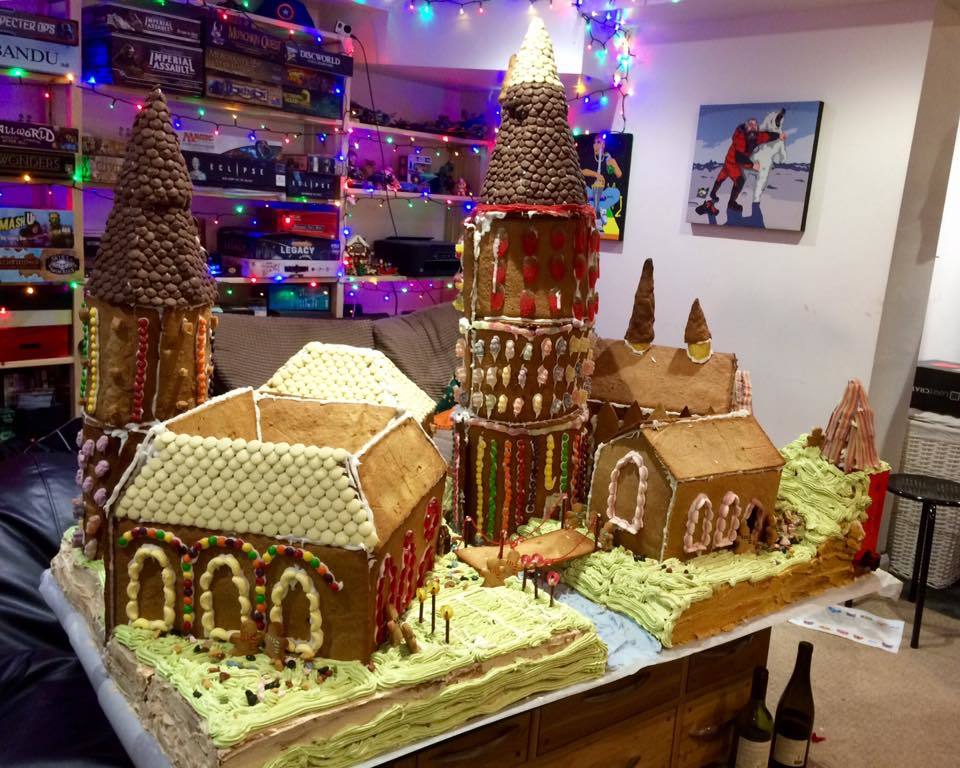
2009 | The first gingerbread
We weren’t ambitious. We built a cute little gingerbread house. It only took one batch of gingerbread and a few sweets for decoration, and it disappeared remarkably quickly. How things were to change!
2010 | The castle
This took two whole batches of gingerbread. We wanted to top the previous year, and this seemed like the obvious next step. We were so impressed at the time with the four towers, complete with crenelations.
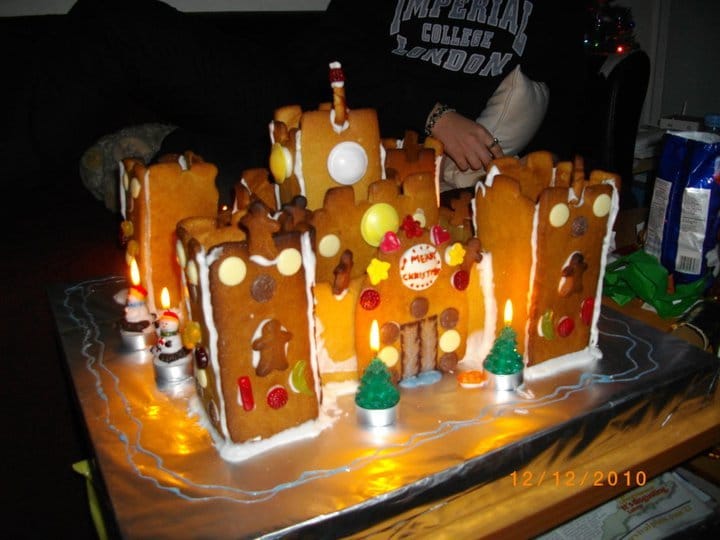
2011 | The bridge
This used gingercake to create a valley and gingerbread created the suspension bridge spanning the gap. The first creation that required significant architectural planning, although decoration was less exciting.
2012 | The train
We had to scale down the production during baking because we hadn’t considered that the size of the oven was a limiting factor. Still, we produced a three-carriage train with a single piece cylindrical body for the engine. Unfortunately, there was a roof collapse in one of the carriages, causing the creation to have a plot line of being invaded by alien mice.

2013 | St Basil’s Cathedral (which is not the Kremlin, FYI)
The first of the truly ambitious biscuit architecture. Consisting of eight towers, each topped with an onion dome, with colours and patterns carefully reproduced to match the original. It weighed 40kg, and it was beautiful. Decorative Easter eggs included an homage to Petr Pavlensky, who nailed his scrotum to Red Square, and a LGBT+ pride mural on the outer walls.
2015 | La Sagrada Familia (completed design)
Some said it was stupid to attempt to recreate (to scale) a building that has been under construction for 134 years and isn’t even half built. It was a titan of modular construction, weighing in at around 70kg, with more than 500 individual pieces. Each of the eighteen towers were built to scale, and the main body of the cathedral was complete with stained glass. Unfortunately, we ran out of time to finish the facades, but it was by far the most impressive creation so far.
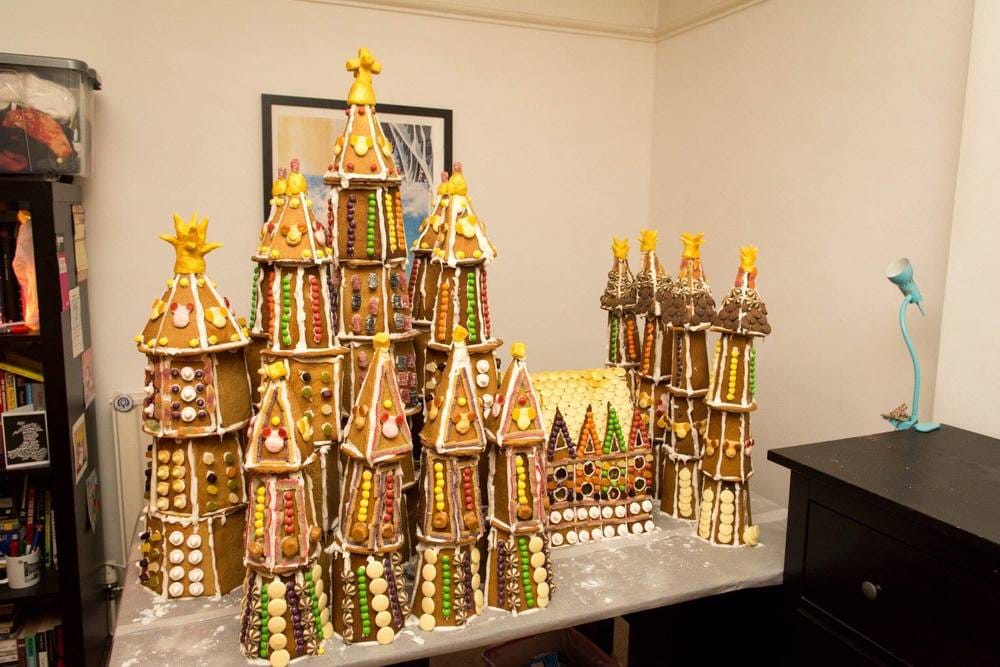
2016 | Hogwarts
We’d tried scaling up, and we couldn’t keep adding towers, so this was the year of technical baking. The challenge: build all the towers as cylindrical and conical pieces. With several towers of different sizes, halls, courtyards, and even an owlery, we spent weeks ahead of time drawing blueprints and crafting moulds. As an added challenge, we gave the whole thing a base of cake to add landscape, and the decorative attention to detail included a quidditch pitch, a somewhat questionable Dark Mark, and a student who may or may not be escaping from the Giant Squid. This creation weighed in at more than 100kg, and posed new challenges of confectionery distribution, as cake really doesn’t keep as long as gingerbread.
How to start your first gingerbread construction
The templates First, you need to make your design, and draw some templates. These days, we use CAD software for the more complex shapes, but most things can be easily sketched out on a piece of paper with the use of some basic geometry.
The gingerbread Using your hands or a mixer (we recommend a mixer for large quantities), mix together all the ingredients until it forms an even ball. Make sure that the sugar and margarine are evenly distributed throughout. Roll out to the desired thickness – just over half a centimetre for gingerbread men, just under half a centimetre for construction. To get the best results, roll out between sheets of baking paper (watch out for creasing). Bake at 180°C for 8-10 minutes (for soft gingerbread biscuits), or slightly longer for larger construction pieces. You want an even, dark colour all over the biscuit – you should be able to see when it is cooked. Our largest pieces (around 40x40cm) took around 18 minutes to bake, but in my experience, this is very oven dependent.
- 454g plain flour
- 227g soft brown sugar
- 170g margarine
- 1 egg
- 4 tbsp golden syrup
- 2 tbsp dried ginger
- 1 tbsp cinnamon Assembly and decoration Once all the gingerbread pieces have cooled on wire racks, you can start building. To assemble your gingerbread masterpiece, you’re going to need some glue. In the spirit of gingerbread assembly, there must be nothing that is not edible on the construction when it is unveiled. This means edible glue. For the strength required, you’re going to need royal icing. You can make this with regular icing sugar and egg whites, but for consistency, royal icing sugar and enough lemon juice to bring it together into a stiff, barely pipable paste do the job just fine. Put it into a piping bag (you can make one by folding some baking paper and cutting off the end) and start assembling your gingerbread. The icing will soften in your hands, so if it feels a little stiff at first, don’t worry.
Start by sticking the first pieces to your base (we recommend assembling on baking paper), and then seal any edges between them. Wait for each layer to set (for around 15 minutes) before adding more pieces above it. Once your assembly is complete, use royal icing to glue edible decorations all over your beautiful masterpiece. The cake We kept it simple with vanilla sponge and jazzed it up with flavoured buttercreams, but you could substitute any flavourings to the sponge. Using a mixer, add all the ingredients and mix until well combined and very light and airy. For best results, it should have taken on a mousse-like consistency. If preparing by hand, first cream together the butter and sugar, before gradually introducing the remaining ingredients, beating constantly. Pour into a baking paper lined tin, and bake at 175°C (fan) for around 15-20 minutes, depending on the thickness of the cake, until a skewer comes out clean. We scaled this up to five-egg batches, which took 28 minutes to bake in a 35x24cm cake tin.
To make the buttercreams, beat together all of the ingredients and mix until smooth. Use them as layering between sponges, and to coat the outside of the cake. If desired, add food colouring – you may have to add extra icing sugar to compensate.
Ingredients
- The cake
- 125g butter (or margarine)
- 125g caster sugar
- 125g self-raising flour
- 2 eggs
- 1 tsp baking powder
- 1 tsp vanilla extract
- Pumpkin spice buttercream
- 225g butter, softened
- ½ can pureed pumpkin
- 1 kg icing sugar
- 1 tsp vanilla extract
- 1 tsp cinnamon
- ½ tsp nutmeg
- Apple cinnamon buttercream
- 500g butter, softened
- 1.2 kg icing sugar
- 2 tbsp applesauce
- 1 tbsp vanilla extract
- 2 tsp cinnamon
- ¼ tsp fine salt
- 3 tbsp lukewarm water
Some notes on structural baking
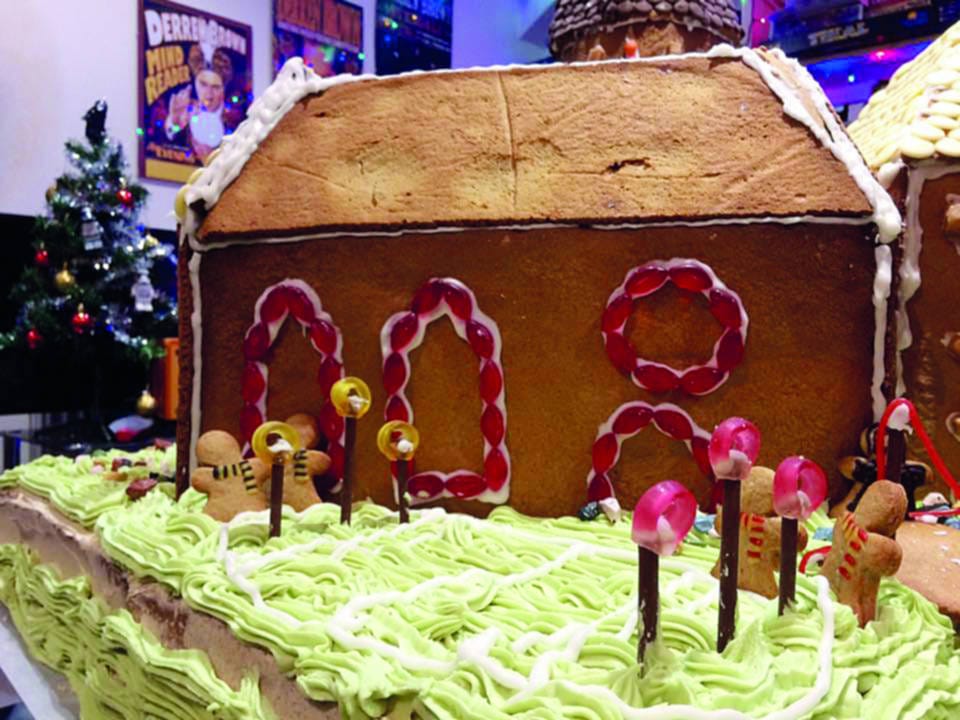
When building things out of gingerbread, some level of care and precision is required. As you scale up the operation, the importance of this increases, and several other factors come into play. As the engineers out there may have identified, these problems include (1) the swelling of the gingerbread during the bake, (2) the strength and weightbearing requirements of the individual pieces, and (3) the choice between flat and curved pieces.
The gingerbread growth problem No matter how carefully you cut out your stencils, the shape you put into the oven is not going to be quite the shape that you get out. This isn’t always a huge problem, but if you’re a perfectionist, you can fix it. Gingerbread comes out of the oven soft, and then hardens as it cools, so you have some time. Using a sharp knife, trim back any edges that need to be straight, or even use the stencil to reshape the biscuit. You can do this at any point during the second half of the baking time, or straight away when it comes out the oven.
The tensile strength of gingerbread Who hasn’t thought about taking some cookies into the lab and testing them out on an Instrom machine? Well, we didn’t do it for you, but we do have years of experience in baking the gingerbread differently to achieve different strength properties. Thicker, softer gingerbread is more delicious, but has a tendency to bow if it needs to support more than one layer above it. The solution: thinner, crisper pieces. Roll slightly thinner, and bake longer at a cooler temperature, and at optimum conditions, the gingerbread will form a hard, glass-like solid. It’s not so good for eating (yet), but it’s great for building. ‘Structural’ gingerbread, as we call it, will actually soften into delicious gingerbread after a day or so, so by baking in this way, you don’t have to be wasting food.
By doing this, as well as applying some basic engineering principles such as using cross-pieces to minimise weight load, and bracing any pieces that seem to be struggling, you can build a veritable Tower of Babel out of gingerbread without problems.
The new 3D printing If constructing a building out of flat, rectangular pieces is like first year, baking solid 3D shapes successfully is worth a PhD. We’ve spent years working on a seamless gingerbread curve, and we’ve learnt that getting it right means requires constant attention, fairly serious burns, and carefully thought out moulds. Moulds should be as solid as possible, easy to place the gingerbread on to, and very easy to take the gingerbrad off. Ideally, allow airflow within the mould for an even bake.
Bake it low and slow, but watch out that the gingerbread doesn’t stretch too much during the baking. You may need to reshape and touch up the piece when it’s in the oven. Trim where needed, and if any cracks appear, you can patch them with dough within the first eight minutes or so.
